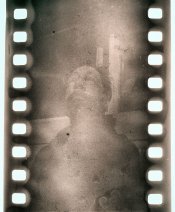Kinda all right and all wrong. There are several types of direct reversal emulsions, but they basically involve a core-shell structured precipitation.
The core emulsion, of whatever type is fogged during sensitization and then a second normal emulsion is precipitated on top. The developer or the coating usually contains a 'nucleating' agent that prevents development on the surface where there is exposure, but reveals the fogged silver where there is not any exposure.
This is a rather simplified verson of some rather complex physical chemistry. I hope it works for you.
This gives a direct positive image.
Kodak made a color print material sold in Europe under the name Directachrome which was used to make prints directly in malls and kiosks with a simple 2 step process. Kodak's instant film used this technology, which the attorneys said was different than Polaroids and the subject of many Kodak patents.
The judge didn't see a difference between direct reversal and normal emulsions, but saw no malice in Kodak's work to get around Polaroids work therefore he fined Kodak but did not treble damages. At this point Kodak abandoned work on direct reversal.
Very high speeds could be obtained, but the emulsions had to be rather large coarse grained.
At the time of introduction of Ektacolor 30/37 paper, Directachrome was scheduled to be introduced as a companion "R" print material using the same process as the "C" paper, and actually the same emulsions but the "C" paper did not have the reversal chemistry built in. Due to problems with "re-reversal" and dmin, the Directachrome introduction as a professional product was delayed and finally cancelled when it was found that the nucleating agent caused unexpected effects on the "C" paper after a process became seasoned, if one tried to intercut the two products. Also, the developer had a keeping problem related to the nucleating agent.
Another product that never made it. For every one you see on the market, there are sometimes 10 or more that don't make it.
PE











